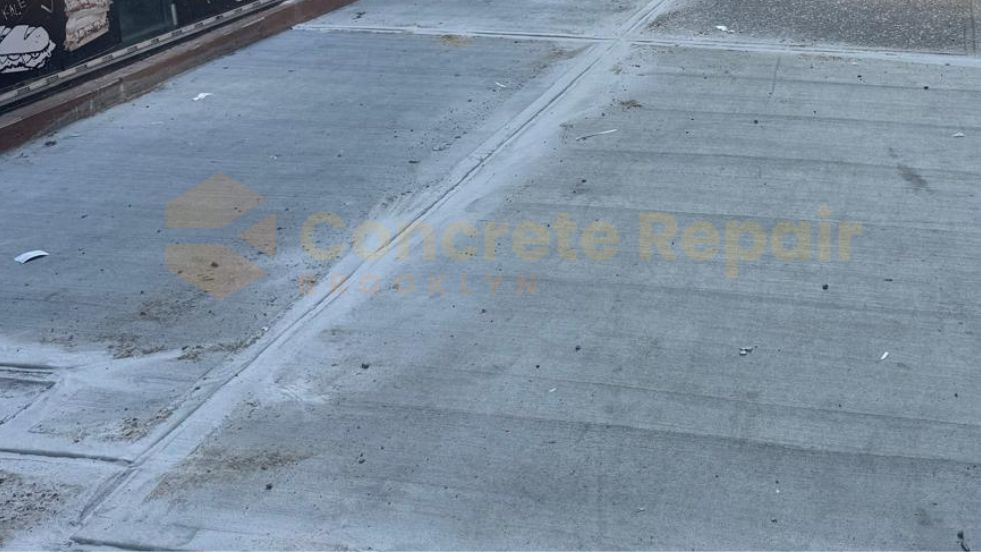
Common Concrete Problems and How to Fix Them
Concrete is known as one of the most reliable building materials, but it’s not free from problems. Over the years, weather, heavy use, and shifting ground all take their toll. Although some issues are just cosmetic, others can signal real structural trouble.
The secret is knowing which is which. Few minor issues can be handled yourself, but others require an experienced contractor. Ignoring early warning signs can turn a simple fix into a major expense.
Cracks That Keep Spreading
Cracks are the most common sign of wear. Hairline cracks often appear as concrete cures and shrinks. These usually don’t affect strength and can be sealed to prevent water from getting in.
But cracks that are wide, deep, or keep growing are a different story. They may be caused by shifting soil, frost heave, or heavy loads. In these cases, simply filling the gap will not solve the root problem.
If you notice cracks that trap dirt, allow weeds to grow, or create uneven edges, it’s time for an inspection. A contractor can check if the base material is failing or if the slab is moving. Addressing these early can prevent costly replacements.
Surface Flaking and Chipping (Spalling)
When the upper layer of concrete starts to chip or flake, that’s spalling. This often happens from freeze-thaw cycles, de-icing salts, or weak concrete mixes.
If the problem is shallow, a resurfacing layer can restore the surface and add strength. But if the flaking is deep or covers large areas, it may point to poor installation or bad curing. In those cases, a contractor can test the concrete to see if it’s still strong enough to hold repairs.
Spalling is more than an appearance issue. If left unattended, the damage will spread and may expose the steel reinforcement underneath, leading to faster deterioration.
Fine Web-Like Cracks (Crazing)
Crazing looks like a thin spiderweb pattern on the surface. It usually happens when concrete dries too quickly after pouring. While mostly a cosmetic issue, it can trap dirt, stains, and moisture over time.
Light crazing can often be left alone, but resurfacing will improve the look and make cleaning easier. If you notice that these cracks are widening or showing signs of spalling, it’s worth having a concrete contractor check for underlying damage.
White Powdery Deposits (Efflorescence)
Efflorescence shows up as a white, powdery film on the surface of concrete, caused when moisture travels through it and deposits salts as it evaporates.
A quick sweep or rinse will remove it for now, but repeated buildup signals an ongoing moisture problem. If it’s near walls or basement areas, that moisture could cause other damage over time.
If efflorescence continues to reappear, applying a concrete sealer and enhancing drainage can help prevent it. Persistent issues are best checked by a professional to ensure the slab or foundation isn’t being damaged from within.
Uneven or Faded Color
Color changes can happen right after the pour or years later. They’re often caused by inconsistent mixing, different cement batches, or weather exposure.
Uneven color is usually a cosmetic issue. A tinted sealer or concrete stain can refresh the appearance and give the slab a uniform look.
But sudden color changes, especially with dark or damp patches, may point to moisture problems or poor drainage. If you see those signs, an inspection is worth it to rule out deeper issues.
Internal Chemical Damage
Some concrete problems start from within. One example is alkali-silica reaction, which makes the concrete swell and crack over time. It’s often called “concrete cancer” because it spreads slowly but steadily.
Once it starts, you can’t reverse the reaction, but you can slow it down. Sealing the surface and limiting water exposure helps. For new projects, using the right mix and aggregates is the best prevention.
If you see cracks forming without obvious causes, a contractor can check for this type of internal damage before it becomes severe.
Rough or Hollow Areas (Honeycombing)
Honeycombing happens when the concrete mix separates or is not compacted well during pouring. This leaves hollow pockets where the aggregate is visible.
Small areas can be patched, but large honeycombed sections are weaker and may need replacing. Professionals can assess whether the problem is only on the surface or goes deeper into the slab.
This problem is often a sign of poor workmanship. If it appears soon after installation, it’s worth discussing repairs or replacements with the contractor who poured the concrete.
Poor Curing Practices
Concrete gains its strength during curing, which is the first several days after pouring. If it dries too fast or is exposed to heavy loads too soon, it can weaken permanently.
Dusting, surface cracks, and reduced strength are all signs of poor curing. While nothing can undo bad curing, sealing and resurfacing can help protect the slab from further damage.
For new projects, proper curing is essential. That means keeping the surface moist and protected for at least a week. This step can add years to the life of the slab.
Final Advice
Concrete problems range from simple surface-related issues to extensive structural concerns. Knowing which is which can save time and money. Small cracks, light surface wear, and cosmetic stains can often be handled with basic maintenance.
But when you see spreading cracks, deep flaking, or signs of moisture problems, it’s time to call a professional. They can find the cause, suggest the right fix, and prevent future trouble.
Strong, well-maintained concrete can last for decades. The key is early action, quality materials, and experienced workmanship from the start.





